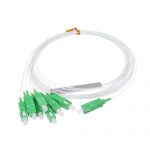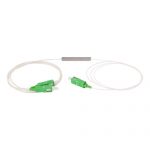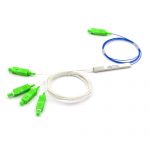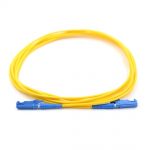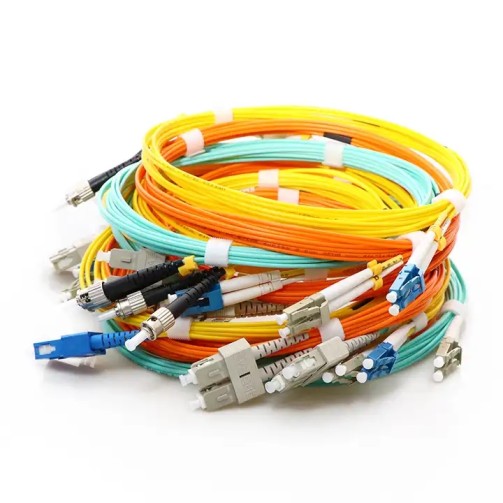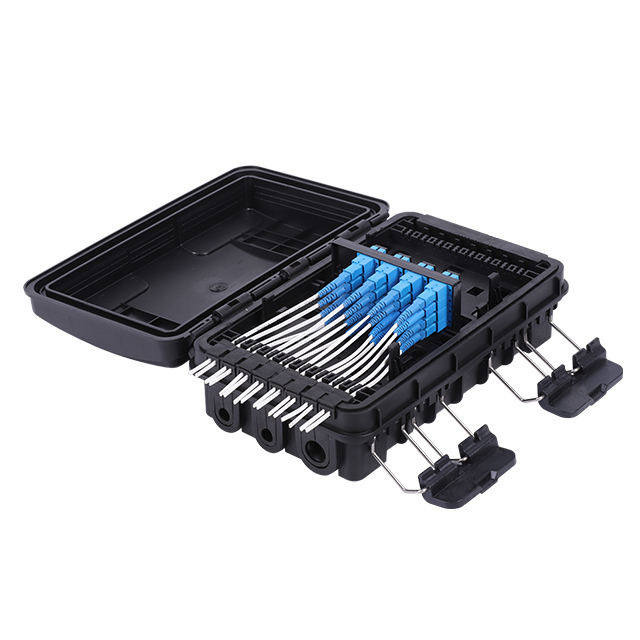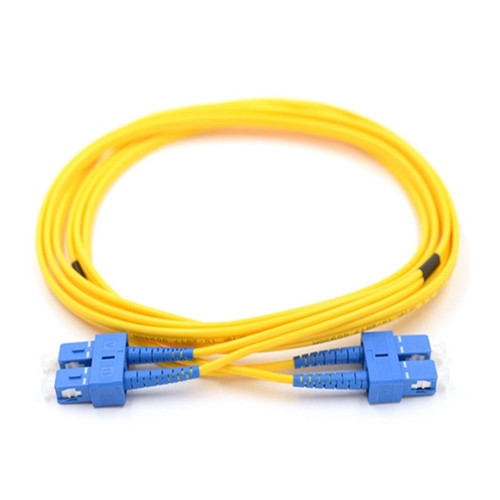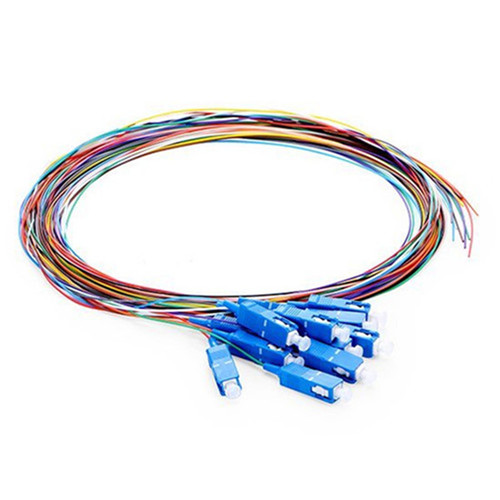Fiber optic connectors are essential components in fiber optic communication systems that allow for the connection of two optical fibers to create a continuous optical path. There are many different types of fiber optic connectors, each with its own unique features and applications. In this post, we will introduce and provide a short description of the most commonly used fiber optic connectors in the USA, including SC, LC, FC, ST, E2000, MTRJ, and MPO.

SC Connector:
SC (Subscriber Connector) is one of the most widely used fiber optic connectors in the USA. It is a push-pull connector that has a square shape and is easy to install. It is designed for use with both single-mode and multimode fibers, and its ferrule size is 2.5 mm. SC connectors are ideal for high-speed data transmission applications, including data centers and telecommunications. They offer low insertion and return loss, and their ceramic ferrules provide high durability and stability.
LC Connector:
LC (Lucent Connector) is a small-form-factor fiber optic connector that is also widely used in the USA. It has a ferrule size of 1.25 mm and a push-pull design, making it easy to install and remove. LC connectors are ideal for high-density applications, as they take up less space compared to other connectors. They offer low insertion and return loss, making them suitable for high-speed data transmission applications such as data centers, telecommunications, and CATV.
FC Connector:
FC (Ferrule Connector) is a screw-on connector that has a ferrule size of 2.5 mm. It is ideal for use in single-mode fiber optic systems and offers high stability and low insertion loss. FC connectors are commonly used in the USA in test and measurement applications, as well as high-speed data transmission applications such as data centers and telecommunications.
ST Connector:
ST (Straight Tip) is a bayonet-style connector that is commonly used in multimode fiber optic systems in the USA. It has a ferrule size of 2.5 mm and is easy to install and remove. ST connectors provide high stability and low insertion loss, making them suitable for high-speed data transmission applications such as data centers and telecommunications.
E2000 Connector:
E2000 is a relatively new fiber optic connector that is becoming increasingly popular in the USA. It has a small form-factor design and a ferrule size of 2.5 mm. E2000 connectors offer low insertion and return loss and are ideal for high-speed data transmission applications such as data centers and telecommunications. They are also designed to provide superior dust and laser protection, making them ideal for harsh environments.
MTRJ Connector:
MTRJ (Mechanical Transfer Registered Jack) is a fiber optic connector that combines both fiber and copper connections. It has a ferrule size of 2.5 mm and is designed for use with both single-mode and multimode fibers. MTRJ connectors are ideal for use in LAN (Local Area Network) applications, as they offer high density and are easy to install and remove.
MPO Connector:
MPO (Multi-fiber Push-On) is a multi-fiber connector that is commonly used in high-density applications in the USA. It enables the connection of multiple fibers in a single connector, which reduces cable clutter and saves space. MPO connectors are ideal for use in data centers and telecommunications, as they offer low insertion loss and high bandwidth.
Where to Use Fiber Optic Connectors:
Fiber optic connectors are used in a wide range of applications in the USA, including telecommunications, data centers, CATV, LAN, and test and measurement. They are essential in ensuring accurate and reliable
transmission of high-speed data, and they are also used in medical equipment and military applications.
Telecommunications: Fiber optic connectors are widely used in telecommunications, as they offer high bandwidth and low attenuation. They are used to connect fiber optic cables in long-distance communication systems, as well as in local loop applications.
Data Centers: Fiber optic connectors are essential components in data centers, where high-speed data transmission is critical. They are used to connect fiber optic cables between switches, servers, and storage devices, ensuring that data is transmitted accurately and reliably.
CATV: Fiber optic connectors are used in CATV (Cable Television) systems to connect fiber optic cables to headend equipment and customer premises equipment. They offer low signal loss and high bandwidth, making them ideal for high-quality video transmission.
LAN: Fiber optic connectors are used in LAN (Local Area Network) applications to connect computers, routers, and switches. They offer high data transfer rates and can transmit data over longer distances compared to copper cabling.
Test and Measurement: Fiber optic connectors are used in test and measurement applications to measure optical power levels and to troubleshoot fiber optic networks. They are used with fiber optic power meters, light sources, and OTDRs (Optical Time Domain Reflectometers).
Medical Equipment: Fiber optic connectors are used in medical equipment, including endoscopes and surgical instruments, to transmit light and images. They offer high transmission rates, reliability, and durability.
Military Applications: Fiber optic connectors are used in military applications, including tactical communication systems, surveillance equipment, and missile guidance systems. They offer high transmission rates, low signal loss, and resistance to electromagnetic interference.
How to Use Fiber Optic Connectors:
Using fiber optic connectors requires proper handling and installation to ensure accurate and reliable data transmission. Here are the basic steps for using fiber optic connectors:
- Prepare the Connector: Ensure that the connector is clean and free of any debris. Use a lint-free cloth and alcohol to clean the connector if necessary.
- Prepare the Fiber: Strip the fiber jacket and clean the fiber endface using a fiber optic cleaning tool. Be sure to avoid touching the fiber endface with your fingers.
- Insert the Fiber: Insert the fiber into the connector ferrule and ensure that it is properly aligned with the connector.
- Crimp or Screw-On: Depending on the connector type, either crimp or screw-on the connector to secure the fiber in place.
- Test the Connection: Use a fiber optic power meter to test the connection and ensure that it is working correctly.
- Repeat: Repeat the process for the other fiber to be connected, and then connect the two connectors using a patch cable.
It is important to handle fiber optic connectors with care to prevent damage to the fibers or the connector itself. Always store connectors in a clean, dry place and avoid touching the fiber endface with your fingers.
Conclusion:
Fiber optic connectors are essential in fiber optic communication systems, providing reliable and efficient connectivity for high-speed data transmission. With a wide range of types and applications, fiber optic connectors offer a range of features that make them ideal for use in a variety of industries. By following proper handling and installation procedures, fiber optic connectors can provide years of reliable service for your communication needs. Choose the connector type that best suits your application and enjoy the benefits of high-speed, accurate, and reliable data transmission.
